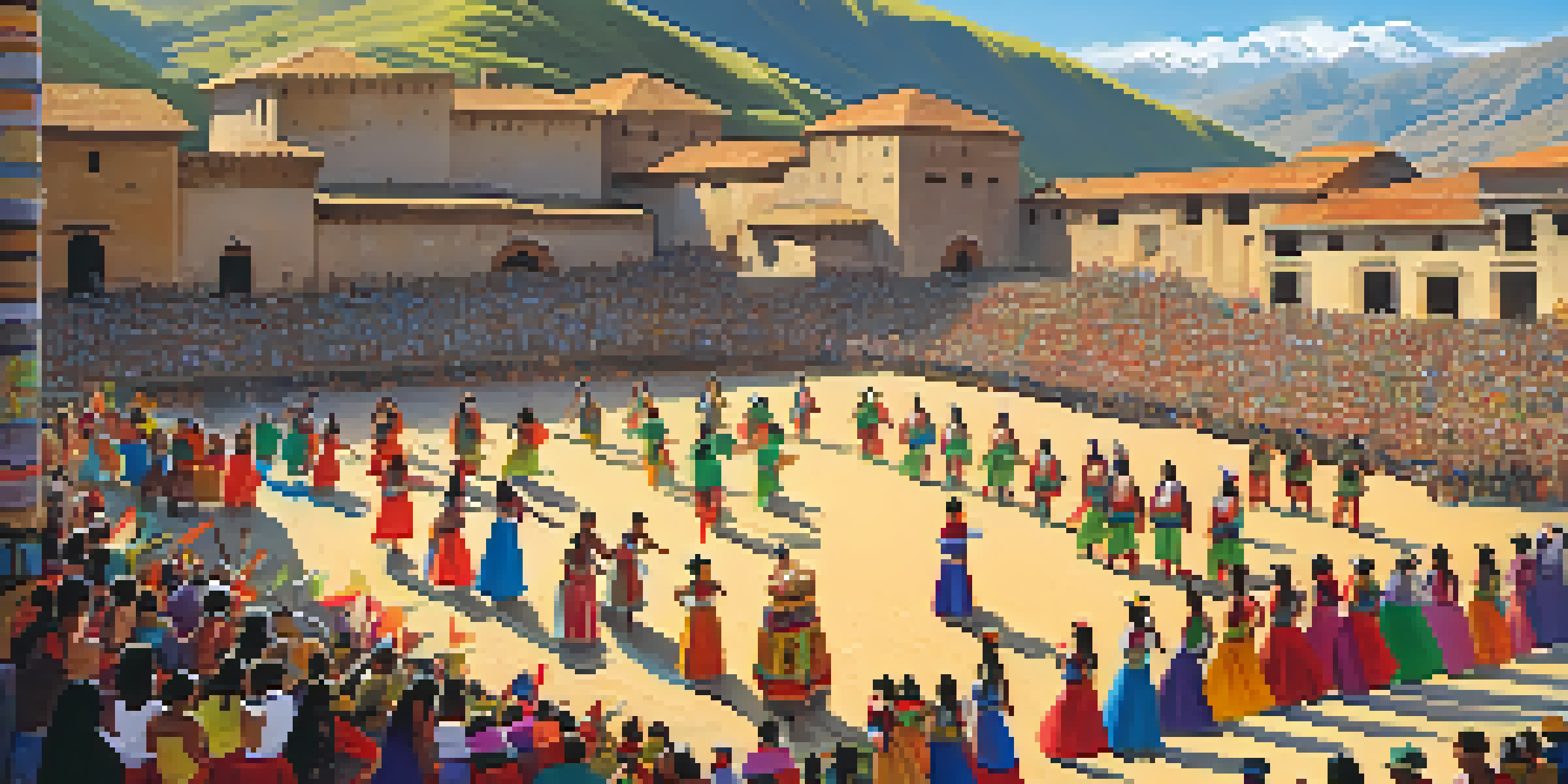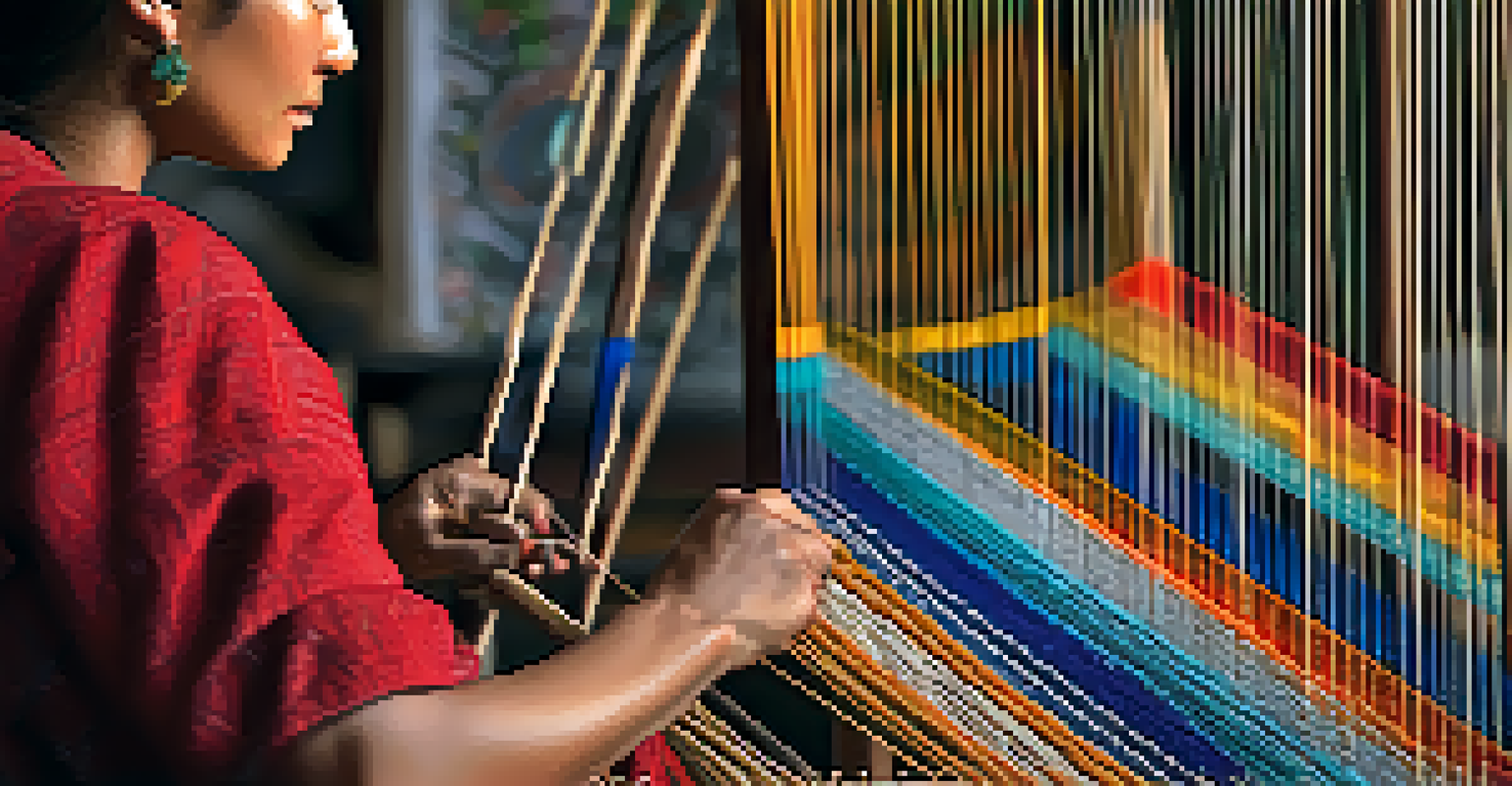Community-Based Initiatives for Cultural Heritage in Peru

The Importance of Cultural Heritage in Peru
Cultural heritage in Peru is a tapestry woven from centuries of history, tradition, and identity. It encompasses everything from ancient ruins to vibrant festivals that embody the spirit of its people. Understanding this heritage is crucial, as it shapes not only national pride but also local community cohesion.
Cultural heritage is the foundation of our identity and the mirror of our history.
For many Peruvians, their cultural heritage is a source of resilience and belonging. It connects them to their ancestors and informs their daily lives, whether through language, art, or cuisine. By preserving these cultural threads, communities can foster a sense of unity and purpose amidst modern challenges.
Moreover, cultural heritage attracts tourists, which can be a significant economic boost for local communities. When residents take pride in their heritage, it enhances the visitor experience, creating a mutually beneficial relationship that supports both cultural preservation and local economies.
Grassroots Movements: A Driving Force
Grassroots movements have emerged as powerful agents of change in preserving Peru's cultural heritage. These initiatives often begin with community members who identify the need to protect their traditions and sites. From local artisans to cultural advocates, they work tirelessly to raise awareness and mobilize support.

One example is the revitalization of traditional weaving techniques in Andean communities. Local organizations have stepped in to teach younger generations these skills, ensuring that the intricate designs and stories behind them are not lost to time. This hands-on approach empowers individuals while keeping their culture alive.
Cultural Heritage Shapes Identity
Peru's cultural heritage connects communities to their ancestors, fostering resilience and unity.
These movements highlight the importance of local voices in cultural preservation. By fostering pride in their heritage, communities can create a sustainable environment that values and promotes their unique cultural identity for years to come.
Collaborations Between Communities and Institutions
Collaborations between local communities and cultural institutions have proven vital for preserving Peru's heritage. These partnerships can provide resources, expertise, and funding that grassroots movements often lack. By working together, they can create programs that support cultural education and conservation efforts.
It is not enough to have a good mind; it must be applied. It is not enough to have a heart; it must be used.
For instance, museums in Peru have begun to engage with local artisans to showcase traditional crafts in their exhibits. This not only highlights the importance of these crafts but also provides artisans with a platform to share their stories and skills with a broader audience. Such collaborations create a win-win scenario for both parties.
Furthermore, these partnerships can facilitate the development of community-led tourism initiatives. By incorporating local knowledge and practices, they can enhance visitor experiences while ensuring that the economic benefits directly support the communities involved.
The Role of Education in Cultural Preservation
Education plays a crucial role in preserving cultural heritage in Peru. Community-based initiatives often include educational programs aimed at teaching younger generations about their history and traditions. By instilling pride in their culture, these programs foster a sense of responsibility towards its preservation.
For example, workshops on traditional cooking, music, and dance not only keep these practices alive but also create a sense of community. When children and young adults participate in these activities, they connect with their roots and learn to appreciate the cultural richness that surrounds them.
Grassroots Movements Drive Change
Community-led initiatives play a crucial role in preserving traditional practices and cultural identity.
Moreover, educational programs can incorporate storytelling, which is a powerful tool for cultural transmission. By sharing stories from their ancestors, community members can pass down values and traditions, ensuring that future generations carry forward their cultural legacy.
Sustainable Practices in Cultural Heritage Management
Sustainability is a key consideration in managing Peru's cultural heritage. Community-based initiatives emphasize the importance of using local resources and practices to ensure that preservation efforts do not harm the environment. This approach recognizes that cultural and ecological health are intertwined.
One example is the promotion of sustainable agriculture practices among communities near archaeological sites. By encouraging traditional farming methods that respect local ecosystems, these initiatives help protect both the land and the cultural significance of these sites. It’s a holistic approach that benefits both heritage and nature.
Additionally, sustainable tourism practices are being adopted to minimize the impact on local communities and heritage sites. By promoting responsible travel, communities can ensure that tourism benefits them economically while preserving their cultural integrity.
Challenges Facing Community-Based Initiatives
Despite the positive impact of community-based initiatives, several challenges persist. Limited funding and resources can hinder the effectiveness of preservation efforts. Many communities rely on volunteers, which can be inconsistent and may not always yield the desired results.
Moreover, external pressures from urbanization and globalization can threaten traditional ways of life. As cities expand, cultural sites may face degradation, and younger generations may gravitate toward modern influences, risking the loss of their heritage. This tension highlights the need for ongoing support and advocacy.
Education Supports Heritage Preservation
Educational programs are essential for instilling pride in cultural traditions among younger generations.
Additionally, there can be a lack of awareness or appreciation for cultural heritage among broader society. Efforts must be made to educate not just local communities but also visitors and policymakers about the value of preserving cultural heritage as a collective responsibility.
Success Stories and Inspirations
Success stories abound in Peru, showcasing the effectiveness of community-based initiatives in preserving cultural heritage. One inspiring example is the revival of traditional music in the Andes, where local musicians have come together to share their art with younger audiences. This revival has sparked a renewed interest in their cultural roots.
Another noteworthy initiative is the restoration of ancient ruins, where local communities have taken the lead in preserving these historical sites. Their involvement ensures that restoration practices respect the original cultural significance and incorporate traditional knowledge. These efforts have not only restored the sites but also strengthened community bonds.

These success stories serve as powerful reminders of the impact that dedicated individuals and groups can have on cultural preservation. They highlight the potential for communities to reclaim their narratives and ensure that their heritage continues to thrive in a rapidly changing world.